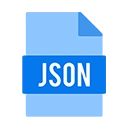JSON stands for JavaScript Object Notation. It is a lightweight data interchange format that is easy for humans to read and write and easy for machines to parse and generate. JSON is primarily used to transmit data between a server and a web application, serving as an alternative to XML. Its simplicity and flexibility have made it a popular choice for data exchange in web services and APIs.
1. Origins of JSON
JSON was derived from JavaScript, specifically from the way JavaScript objects are structured. It was introduced in the early 2000s by Douglas Crockford, who recognized the need for a simple and efficient format for data interchange. JSON quickly gained popularity due to its ease of use and compatibility with various programming languages.
2. Structure of JSON
JSON data is represented as key-value pairs, similar to dictionaries in Python or objects in JavaScript. The basic structure of JSON includes:
- Objects: An unordered collection of key-value pairs enclosed in curly braces
{}. - Arrays: An ordered list of values enclosed in square brackets
[]. - Values: Can be strings, numbers, objects, arrays, booleans (
trueorfalse), ornull.
Example of JSON Structure:
{
"name": "John Doe",
"age": 30,
"is_student": false,
"courses": ["Math", "Science", "History"],
"address": {
"street": "123 Main St",
"city": "Anytown",
"state": "CA"
}
}
3. Advantages of JSON
- Human-Readable: JSON is easy to read and understand, making it accessible for developers and non-developers alike.
- Lightweight: JSON has a minimal syntax, which reduces the amount of data transmitted over the network compared to XML.
- Language-Independent: JSON can be used with many programming languages, including JavaScript, Python, Java, C#, and more.
- Easy to Parse: Most programming languages have built-in support for parsing JSON, making it straightforward to work with.
4. Using JSON in JavaScript
JSON is natively supported in JavaScript, making it easy to work with. You can use the JSON.parse() method to convert a JSON string into a JavaScript object and the JSON.stringify() method to convert a JavaScript object into a JSON string.
Sample Code in JavaScript:
// JSON string
const jsonString = '{"name": "John Doe", "age": 30, "is_student": false}';
// Parse JSON string to JavaScript object
const user = JSON.parse(jsonString);
console.log(user.name); // Output: John Doe
// Convert JavaScript object to JSON string
const newUser = {
name: "Jane Smith",
age: 25,
is_student: true
};
const newJsonString = JSON.stringify(newUser );
console.log(newJsonString); // Output: {"name":"Jane Smith","age":25,"is_student":true}
5. Using JSON in Python
In Python, the json module provides methods for working with JSON data. You can use json.loads() to parse a JSON string and json.dumps() to convert a Python object to a JSON string.
Sample Code in Python:
import json
# JSON string
json_string = '{"name": "John Doe", "age": 30, "is_student": false}'
# Parse JSON string to Python dictionary
user = json.loads(json_string)
print(user['name']) # Output: John Doe
# Convert Python dictionary to JSON string
new_user = {
"name": "Jane Smith",
"age": 25,
"is_student": True
}
new_json_string = json.dumps(new_user)
print(new_json_string) # Output: {"name": "Jane Smith", "age": 25, "is_student": true}
6. Conclusion
JSON, which stands for JavaScript Object Notation, is a widely-used format for data interchange. Its simplicity, readability, and compatibility with various programming languages make it an essential tool for developers working with web applications and APIs. Understanding JSON is crucial for effective data management and communication between systems.

